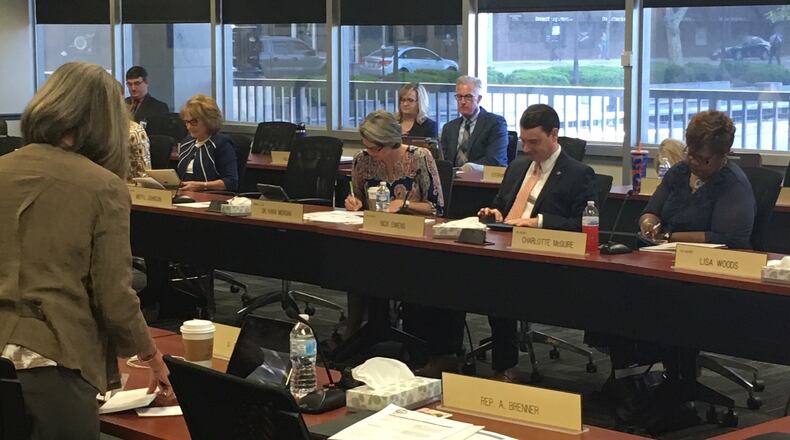RELATED: State board pushes to extend non-test graduation options
But in January, the state school board recommended extending for two more years a set of graduation pathways that were offered to the Class of 2018 — a combination of good senior-year attendance and grades, a “capstone” project, or work/community service hours.
Peggy Lehner, chair of the Senate Education Committee, said Tuesday that she would advise schools to assume that the test-based requirements will stay in place for next year. She said that’s because preliminary state test data seems to show enough students are meeting the 18 test points barrier that the graduation rate wouldn’t be that different.
“We need to stop changing this every year,” Lehner said. “If there’s something wrong with the law, lets fix the law and make it work.”
RELATED: New non-test graduation options spelled out
Lehner said if final state test data this summer or fall shows an unexpected change in that test passage rate, the state legislature could make a late adjustment.
Regardless, this is the second year in a row that a class of Ohio high school students will head into their senior year with some doubt about what rules will determine whether they graduate or not.
“The challenge is getting the state board on the same page with the (legislature), so that we have the same goal for every child in the state of Ohio,” said Charlotte McGuire, the state school board member who represents much of the Dayton area. “Every child should know what’s expected.”
EARLIER: State board weighs extending graduation options
Kara Morgan, the lone state school board member who voted against extending the softer standards in January, said Tuesday she thinks the state should fully analyze data on the existing graduation pathways before making a decision to change them.
State Superintendent Paolo DeMaria said that the extra graduation pathways for 2018 “seem to be well received and filling the need that was identified,” but he said the state won’t have really good data on how many students are using each of those pathways until individual schools report it through the state’s information system.
“We need to figure out what is the data telling us about how well these pathways that we have in place already are working, and then understanding what other options need to be developed,” Morgan said. “I still feel like we haven’t let that process prove itself or disprove itself yet.”
YEAR IN REVIEW: Top Ohio, Dayton education stories of 2017
Many high-performing suburban Dayton-area school districts had 85 to 90 percent of their Class of 2018 students earn the 18 state test points needed for the primary graduation pathway, according to school officials.
But that leaves more than 200 students who relied on the new pathways among just five districts – 54 in Kettering, 62 in Beavercreek, 36 (and rising) in Northmont, 28 in Miamisburg, 26 in Fairborn. This news organization has requested that data from all local school districts, but has not heard back from all districts. Some districts that traditionally have lower test scores likely will have many more students relying on the alternate pathways.
About the Author

